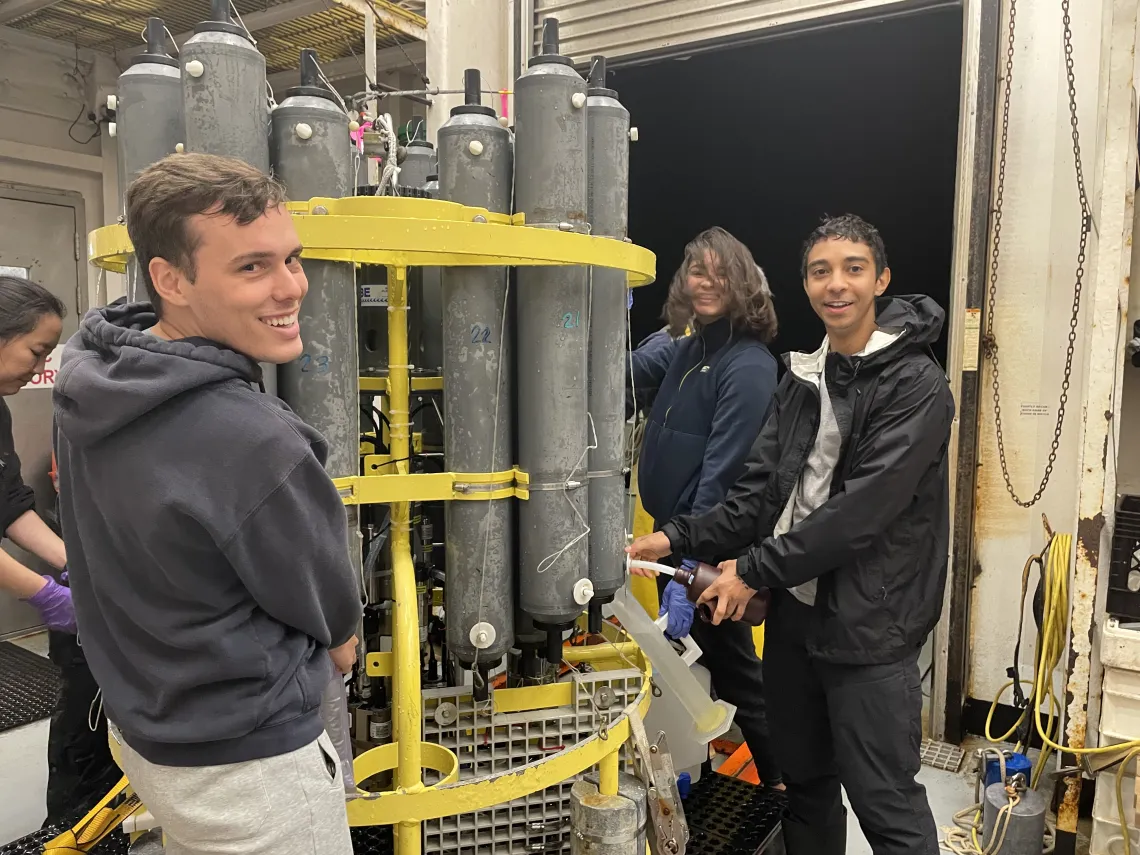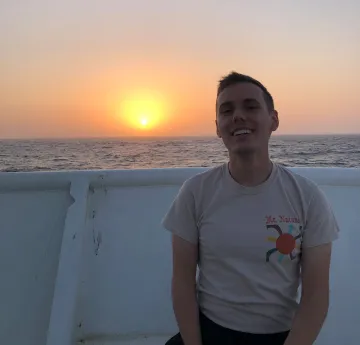A Sea Of Change: Learning to Bridge the Disciplines

Tanner Waters is a Ph.D. candidate at the University of California, Los Angeles. His research focuses on using the emerging technique of environmental DNA to evaluate restoration and conservation efforts in coastal Los Angeles. Below are his reflections on the SW CASC Natural Resources Workforce Development (NRWD) Fellowship.
Our oceans are under a bombardment of threats, such as ocean warming, acidification, hypoxia, and pollution, which are culminating in the loss of our coastal ecosystems. My research centers around studying the restoration/conservation efforts that are being implemented to combat these issues. I was excited when I saw the 2020-21 NRWD Fellowship theme “Management in the Aftermath of Landscape-Scale Disturbances” because it fit exactly with the work of my thesis. When our cohort had its first meeting, however, it quickly became apparent that the other members were all focused on fire-related research. I was nervous, and admittedly a little confused, about how a molecular biologist who specializes in marine genetics would be able to contribute to a fire research group.
Given our remote working environment, the first handful of months of the Fellowship were a slow but extensive dive into our own personal backgrounds, interests, skills, and knowledge gaps. It was equally important for us during that time to not only identify literature gaps that a project could attempt to answer but identify how the diverse set of skills each team member holds could be combined into a project that singular disciplines are normally restricted by. We worked to use the knowledge we gained from the ‘Enabling Interdisciplinary and Team Science’ workshop in September 2020, to guide us in these discussions and were able to converge on a research topic to which we could all contribute.
We created a project topic that three distinct but interconnected sub-projects fell under. One group focused on biophysical modeling of the southwestern United States to understand how climate variability and prescribed fire treatment affect post-fire landscapes. The second group conducted interviews and produced a podcast to better understand the barriers to implementing Indigenous fire management. The third group used social-ecological system theory (the idea that the social world and natural world are interconnected) to provide recommendations to inform national fire policy. The cohort wasn’t limited to working in one group and members often worked in more than one group in some capacity.
As we enter the final few weeks of the Fellowship, I would like to reflect on some of the lessons I learned from engaging in an interdisciplinary, multi-institution, team science fellowship. First, collaborative interdisciplinary research is a slower and more intensive process but yields richer results. Second, everyone has a skillset that can elevate and advance collaborative research. Lastly, working in a large, multi-discipline group not only allows you to share your skills, but it allows you to gain skills in areas that you might never have otherwise.

I was able to use these lessons learned from the Fellowship during my summer research. For two months this summer I sailed with the National Oceanic and Atmospheric Administration (NOAA) from Canada to Mexico collecting ocean samples. The research expedition had over 30 scientists from all different backgrounds and fields working to collect various chemical, physical and biological samples across 150 research sites. The goal of this project was to collect various types of data that could be combined to contextualize the results in a way that no single measurement alone could do. Working with the NRWD cohort for the six months prior to this expedition gave me the skills to bridge these various disciplines and make my research more holistic.

